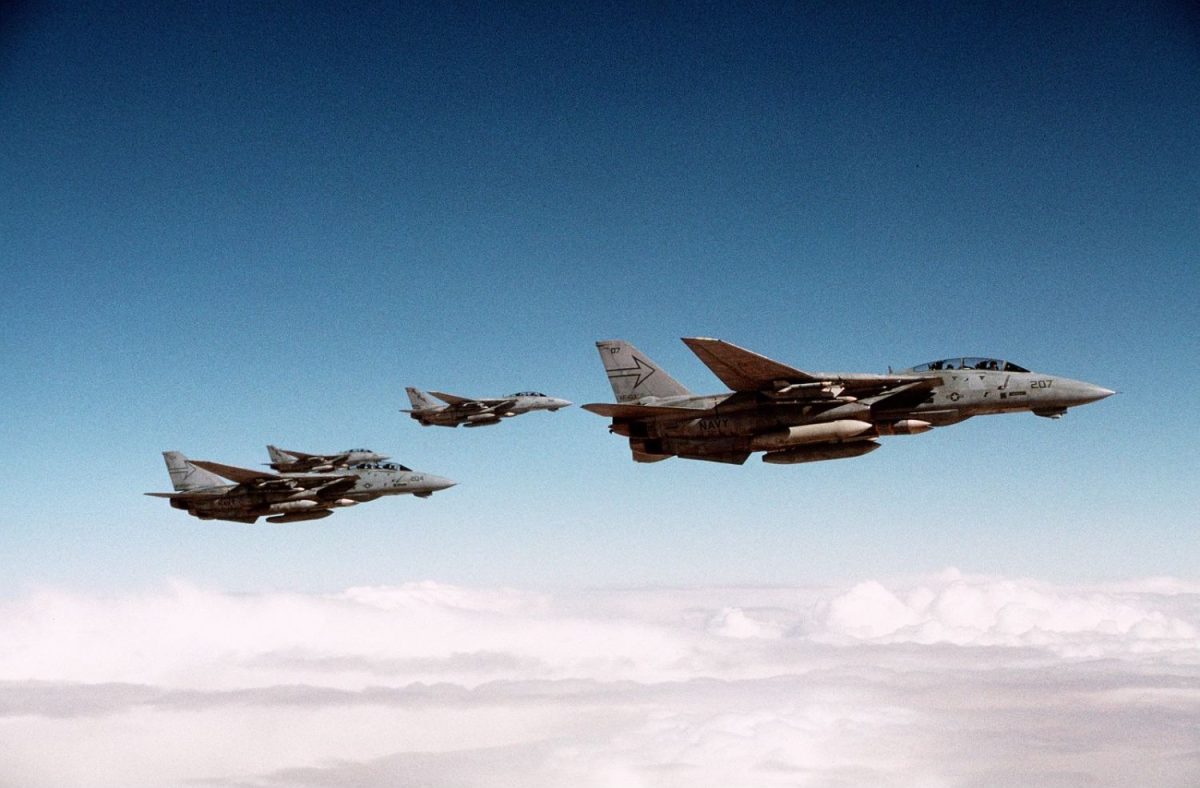Over the years, combat aviation has seen many unbelievable and bizarre incidents; however, one incident stands out: the time when a fighter pilot managed to shoot down his own aircraft.
The Grumman F11F/F-11 Tiger was a supersonic, single-seat, carrier-based fighter aircraft developed by Grumman for the United States Navy.
“Designed as a lightweight fighter, the development model of the F11F, first flown in July 1954, featured thin swept wings, incorporating spoilers instead of ailerons, coupled with an area-rule (coke-bottle shaped) fuselage design that enabled it to exceed Mach 1,” as per the official website of the National Aviation Museum.
The Navy received the first F11Fs in production in March 1957. It was lightweight, highly maneuverable, and had a strong safety record, with no accidents in its first year and low maintenance needs. However, despite being a pioneering supersonic fighter, it was overshadowed by two other, more capable fighters of the time.
The Tiger’s introduction coincided with that of two of the most competent fighters ever made, the F8U Crusader and the F4H Phantom II, which is why it saw little use despite its design performance profile.
The capabilities of the Crusader and the Phantom II were so advanced that the F11F Tiger, which had a more potent engine that allowed it to attain a record altitude of 76,828 feet and a speed of 1,386.47 mph in level flight, never really got the chance to prove itself in combat.
Since the aircraft did not participate in combat, its legacy is pretty limited. However, the self-shootdown incident certainly made it an unforgettable footnote in aviation history.
The Infamous Tiger Self Shoot Down
In April 1955, the aircraft received the new designation F11F-1. It was the second supersonic aircraft of the US Navy, after the Douglas F4D Skyray.
The Tiger was pressed on carrier-based trials in April 1956 when it landed on and launched from USS Forrestal, ahead of its delivery to the service in 1957.
The self-shootdown incident involving the Grumman F11F-1 Tiger occurred on September 21, 1956, during a test flight off the coast of Long Island, New York, when Thomas W. Attridge Jr., a 33-year-old Grumman test pilot with experience in the F9F Panther, was conducting a crucial weapons test.
The objective of this test flight was to fire the 20 mm cannons at high velocity to assess their functionality and the aircraft’s behavior during weapons discharge in near-supersonic conditions.
On the fateful day, Attridge took off from Grumman’s facility at Bethpage, New York, in an F-11F Tiger, tail number 138620, and flew to a test range over the Atlantic Ocean, approximately 20 miles (about 32 kilometers) off Long Island’s coast.
He flew to an altitude of 20,000 feet, after which he swung the Tiger to a 20-degree angle, accelerated to Mach 1, and fired a short (nearly four-second) burst from his four cannons at a distance of about 13,000 feet.
Then, he plunged at a steeper angle, activated the afterburner, and fired another cannon burst at 7,000 feet, depleting the plane’s ammunition.
An unprecedented situation arrived when the aircraft was struck by its own 20 mm rounds approximately 11 seconds after the second burst, at 7,000 feet.
Since there was not a single enemy fighter in sight, Attridge believed he had struck a bird. Attridge later reported hearing multiple impacts and feeling the aircraft shudder.
The situation became dire immediately after the hit, as the impact caused the J65 engine to ingest debris, leading to compressor stalls and a rapid loss of power. The engine began emitting black smoke and vibrations, rendering it nearly inoperable.
Attridge immediately turned toward Grumman’s airfield at Calverton (Peconic River Plant), 8 miles away, attempting to glide the crippled aircraft to safety. Even though he slowed to 230 miles per hour and turned back to land, it wasn’t enough, and the situation continued to deteriorate.
The engine provided minimal thrust, forcing him to rely on the aircraft’s momentum alone to make the landing.
Attridge crashed in a wooded area about a mile short of the runway after failing to maintain altitude. The aircraft skidded 300 feet, caught fire, and was destroyed. The pilot was able to eject right in time and escaped the wreckage but sustained serious injuries, including a broken leg and three fractured vertebrae.
Attridge survived the crash despite its severity due to his prompt escape and the aircraft’s structural integrity. He was hospitalized, eventually recovered, and continued his career as a test pilot.
Later, while recounting the incident, he described the sound of the plane breaking as “a Hoover vacuum cleaner picking up gravel from a rug.”

In the aftermath of the crash, it was discovered that a self-shootdown occurred because the F11F-1 had somehow overtook its own cannon round.
The 20 mm Colt Mk 12 cannon had a muzzle velocity of about 2,283 mph, but the rounds decelerated rapidly due to air resistance, or drag, after leaving the barrel. Meanwhile, the F11F-1 Tiger was traveling at about 700–760 mph (Mach 0.92–1.0) in a shallow dive, accelerating slightly as it descended.
In the shallow dive, the cannon rounds followed a slightly curved, ballistic trajectory due to gravity, while the aircraft’s path was more linear. As the aircraft accelerated and descended, it “caught up” to the slower-moving rounds fired earlier. The rounds were traveling at a reduced velocity when the aircraft, moving much faster, intersected their path.
It was discovered that one round struck the windshield, cracking it but not penetrating; another hit the right engine intake, damaging the compressor blades; and a third round struck the nose, causing minor damage. Additionally, one cartridge was even discovered stuck within the aircraft, which further helped the investigators confirm that the aircraft had shot itself down.
The investigation highlighted three things: 1) the ballistic trajectory of the rounds and deceleration allowed the aircraft to “catch up” during the dive; 2) the J65 engine’s vulnerability to foreign object damage (FOD) from ingested rounds; 3) no pilot error, as the incident was deemed an unforeseen consequence of high-speed flight and weapons testing.
The incident was an innovation in air combat because the biplanes of World War I and the fighters of World War II did not fly fast enough to pose a risk of accomplishing such a feat. However, the advent of new supersonic fighter jets changed the rules of combat as the fighter pilots could suddenly travel faster than the missiles they were firing.
This iconic self-shootdown paved the way for revision in testing protocols for high-speed weapons firing. For one, test ranges adopted stricter guidelines for dive angles and firing conditions to avoid trajectory overlap. Additionally, the pilots were trained to account for the relative motion of projectiles in high-speed flight.
This was the first documented case of a jet aircraft shooting itself down, though similar incidents later occurred with other aircraft. For instance, the Grumman F-14 Tomcat shot itself down in June 1973, when an AIM-7 Sparrow missile launch went awry, causing the missile to strike the aircraft, as noted earlier by The National Interest.

The Tiger shootdown, however, remains a notable anecdote in aviation history, often cited in discussions of unusual military accidents. It brought to light the intricate relationship between high-speed flying, ballistics, and aerodynamics in the early jet age.
The event has been cited in online forums, documentaries, and aviation literature as a cautionary tale of how technology is advancing more quickly than established procedures can keep up.
The Tiger was later used by the Navy’s Blue Angels flight demonstration team from 1957 to 1969, performing precision maneuvers in several shows.
- Contact the author at sakshi.tiwari9555(at)gmail.com
- Follow EurAsian Times on Google News




